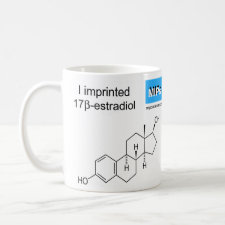
Authors: Grace SV, Murab S, Krupadam RJ
Article Title: Removal of 17β-Estradiol from Groundwater Using Nanoporous Molecularly Imprinted Polymer Adsorbent.
Publication date: 2012
Journal: Journal of Hazardous, Toxic, and Radioactive Waste
Volume: 16
Issue: (2)
Page numbers: 183-189.
DOI: 10.1061/(ASCE)HZ.2153-5515.0000094
Abstract: A polymer adsorbent specific for 17β-estradiol (E2) was prepared using molecular imprinting technique. E2 is one of the female hormones (estrogen) and it is recently reported in drinking water resources. In this paper, we present a method for remediation of E2 in ground water using molecularly imprinted polymer (MIP) adsorbent. The molecular modeling software (HyperChem 8.0) was used to select best polymer precursors for polymer preparation based on interaction energy scorings. The scanning electron microscopy (SEM) and transmission electron microscopy (TEM) micrographs revealed the existence of nanopores (0.65–0.8 nm diameter) in the polymer because of imprinting. The FT-IR spectra of MIP and non-imprinted polymer (NIP) further confirmed H-bond formation between carboxylic acid group of methacrylic acid (MAA) and E2 responsible for selective adsorption of E2. The adsorption capacity and binding affinity of MIP were determined using Langmuir and Freundlich isotherm models. The adsorption capacity of MIP was 96.75 mg g-1 and this value is 2 times higher than the commercially used activated carbon. The effect of environmental parameters such as total dissolved solids (TDS) and pH on adsorption removal of E2 was studied for water and groundwater samples collected from industrial areas. In this study, we are reporting first time, the re-usability of MIP adsorbent without loss of adsorption capacity more than eight cycles. High adsorption capacity and resistance to environmental parameters like TDS and pH demonstrated the merits of MIP over single time use activated carbon for remediation of E2 contaminated water.
Template and target information: 17β-estradiol, E2
Author keywords: endocrine-disrupting chemicals, 17β-estradiol, molecularly imprinted polymer



Join the Society for Molecular Imprinting

New items RSS feed
Sign-up for e-mail updates:
Choose between receiving an occasional newsletter or more frequent e-mail alerts.
Click here to go to the sign-up page.
Is your name elemental or peptidic? Enter your name and find out by clicking either of the buttons below!
Other products you may like:
 MIPdatabase
MIPdatabase









